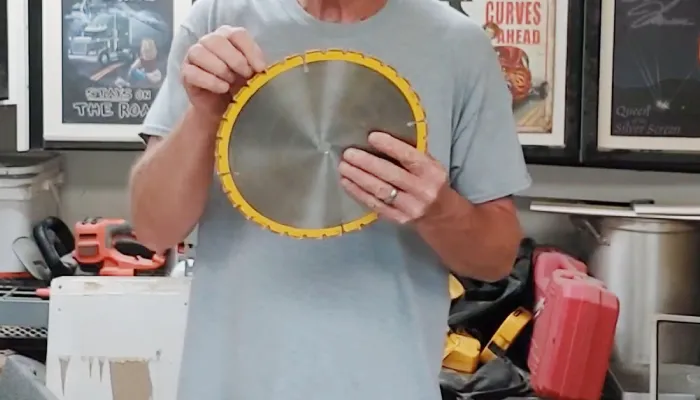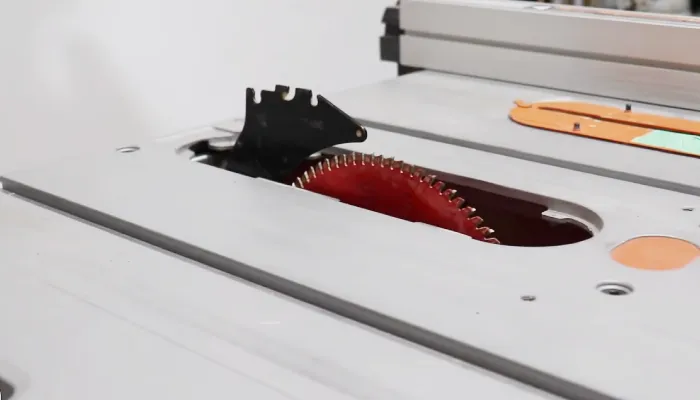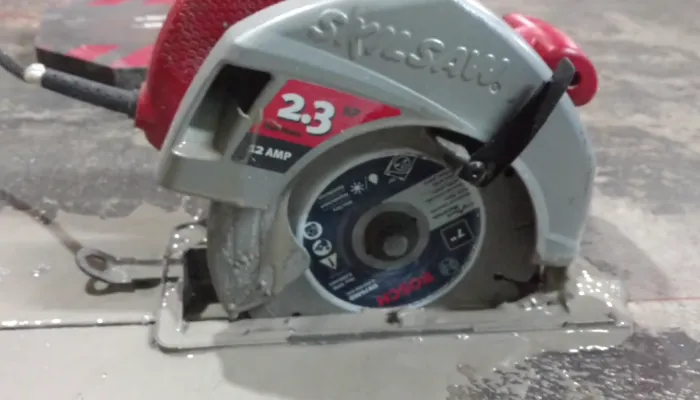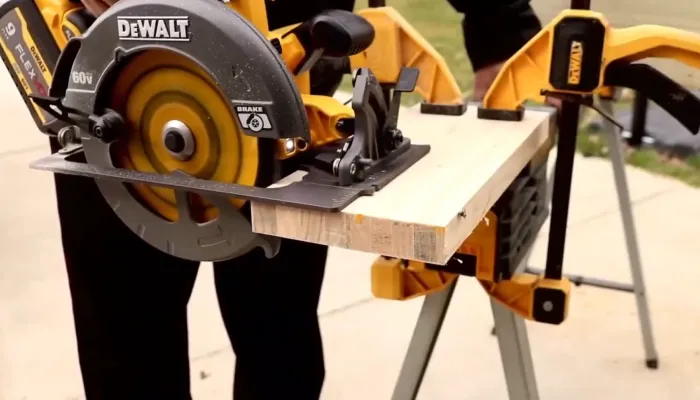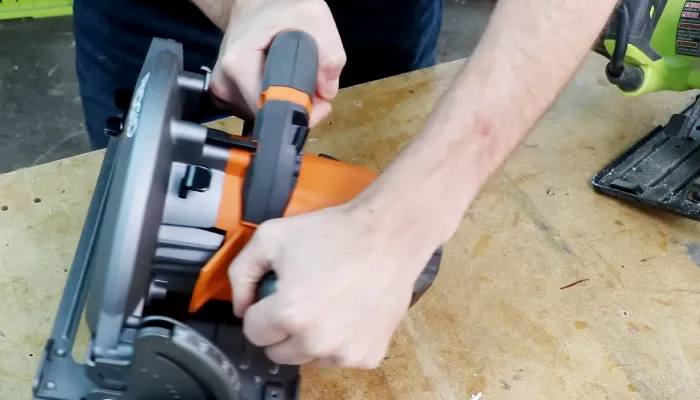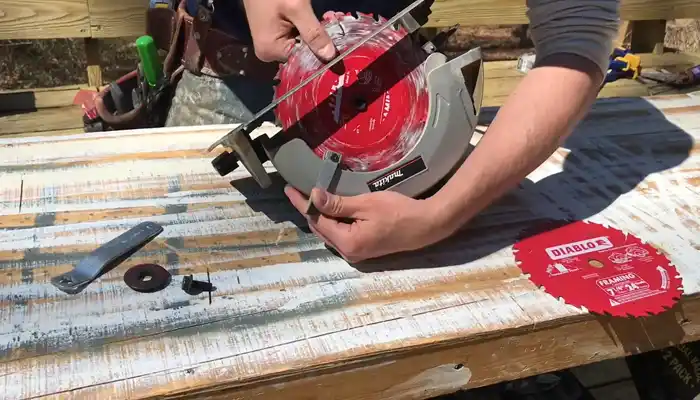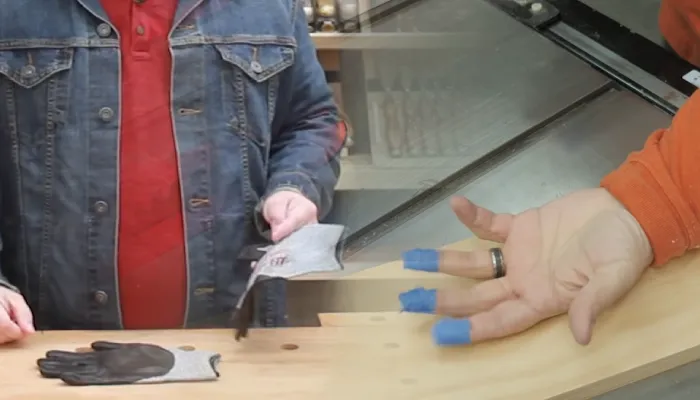How Long Do Circular Saw Blades Last: 6 Factors [Affect]
Circular saw blades are great tools for woodworkers, utilizing a metallic disc of sharp teeth to create precision cuts in various materials, from plastic and metal to concrete.
With varying sizes, shapes, and types available depending on the job requirements, their longevity depends upon how they’re treated. The material being cut on them, frequency of use as well as storage conditions all play an important role. The right blade for the job can make all the difference.
Use high-performing, long-lasting carbide, and steel blades to take on tough tasks, while soft metals such as aluminum or copper are ideal when precision is of utmost importance.
Make sure your circular saw blade is stored in a dry place after each use to prevent corrosion and ensure optimum performance. Regular sharpening will help keep it performing at its best.
We’ve got all the information you need to make sure that your necessity never gets dull. Let’s get started with keeping those blades in top shape.
How Long Do Circular Saw Blades Last: Factors That Affect
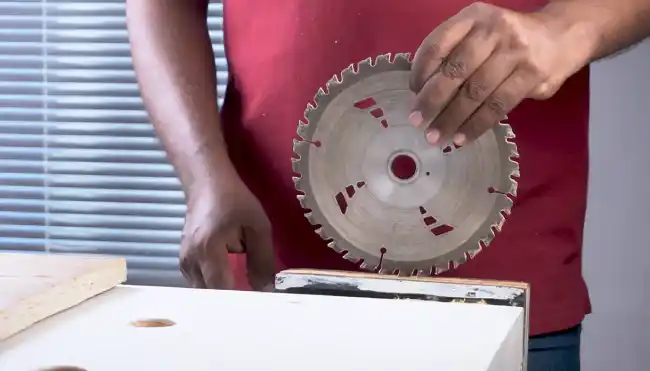
Quality of the Blade Material
The quality of the blade material is a major factor in determining how long circular saw blades last. High-quality materials such as carbide-tipped steel or tungsten carbide steel provide superior durability and a longer lifespan than other lower-quality materials.
The hardness of the material also plays an important role in its longevity, with harder blades able to withstand more strain before needing replacement.
Furthermore, the manufacturing process affects blade quality, with precision machining and heat treatments resulting in sharper edges that stand up to tougher materials.
Cutting Material Used
The types of material being cut also impact the lifespan of circular saw blades. Blades used to cut harder materials such as concrete, or steel will typically need to be replaced more often than those used for softer woods or plastics.
This is because harder materials have an abrasive effect on saw blades which causes them to wear faster over time. Furthermore, the thicker or denser the material being cut, the quicker the blade will dull or become damaged.
Proper Maintenance and Care
Regularly clean your saw blade and ensure that it is properly lubricated before each use to extend its life. You should also inspect your blades regularly for dullness or chips and replace them if necessary.
Frequency of Use
The frequency at which a circular saw blade is used can also affect its overall lifespan significantly. If you only use it occasionally, then it may last much longer than if you are making frequent cuts with it every day.
Even if you’re using high-quality materials and taking proper care of the blade between uses, continual overuse can lead to a premature breakdown of its teeth or other components that make it less effective over time.
Consider investing in additional sets if you plan on using your circular saws frequently so that you always have fresh sets ready when required instead of having to replace worn ones prematurely due to overuse continually.
Proper Storage Techniques
It is important to store your circular saw blade correctly to prevent damage and rust. Store the blade in a dry place, away from direct sunlight or heat sources. Keep the blade out of reach of children. When not in use, store the blade safely in a protective case or container.
Appropriate Use for Different Types of Saws and Blades
Not all saws have interchangeable blades, meaning some are only suitable for specific cuts. Every type of circular saw blade has recommended uses based on what kind of material it was designed for.
Failing to match appropriate tools with compatible applications could lead to premature dulling or even breakage. Certain blades are specifically designed for certain applications, such as quickly ripping through softer woods but struggling with heavier-duty tasks.
General Lifespan Expectations for Circular Saw Blades:
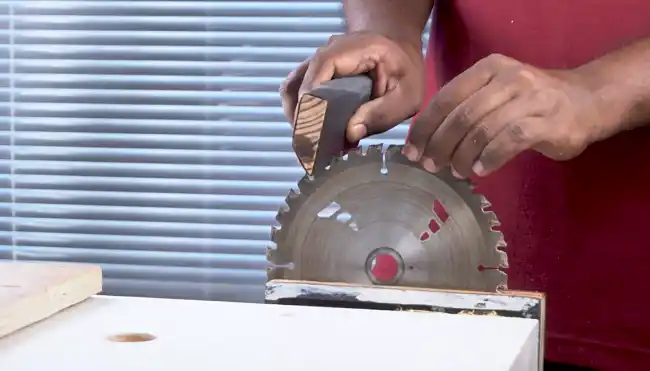
1. Standard Carbon Steel Blades
Standard carbon steel circular saw blades generally last anywhere from a few dozen to several hundred cuts with proper maintenance. The key to maintaining the circular saw blade is cleaning it after every use and ensuring proper storage. This will help extend its life substantially.
The type of material being cut also plays a role in the longevity of your circular saw blade. For example, materials such as wood and plastics may require less frequent re-sharpening or replacement than metals or masonry.
When a standard carbon steel blade begins to wear out, it’s crucial to replace it promptly to ensure safety and efficiency when using a circular saw.
2. Diamond-Coated or Carbide-Tipped Blades
Diamond-coated and carbide-tipped circular saw blades provide an ultra-durable cutting solution that is resistant to damage from even the hardest materials. On average, diamond-coated blades can last up to 10 times longer than a regular carbon steel blade with proper maintenance and upkeep.
These carbide-tipped blades and diamond-coated blades are highly durable and made of hard metal alloys resistant to abrasion. The diamond coating helps prevent rusting and provides smooth cuts through hard materials like concrete or stone without significantly reducing the blade’s lifespan.
On average, these carbide and diamond-tipped blades can last up to 100 hours of work with proper maintenance before needing replacement. This may vary depending on how often the blade is used and what material it is cutting through.
Strategies for Maximizing the Life of Your Circular Saw Blade
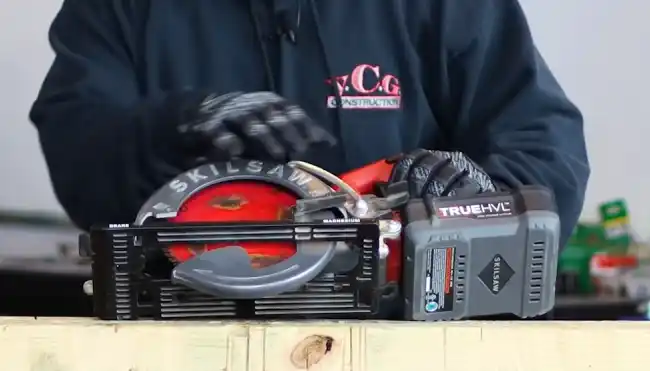
Invest in High-Quality Blades
Investing in a high-quality circular saw blade is important for maximizing the life of the blade. Quality blades are usually made from more rigid steel that can withstand repeated use without dulling or becoming weak quickly.
Blades that have been heat-treated and feature vibration-dampening technology are ideal for increased durability and better performance.
Sharpen or Replace Dull Blades as Needed
It’s important to sharpen or replace circular saw blades when they become too dull to make accurate cuts. Over time, even the highest-quality blades will become dull due to contact with wood chips and other debris flying around when cutting wood.
To ensure that your blade remains sharp, use a sharpening stone or file on its teeth every few uses. If the blade becomes too damaged or corroded from regular use, it’s best to replace it with a new one.
Store Blades Properly When Not in Use
Store circular saw blades away from moisture to prevent rust or corrosion. Keep them out of direct sunlight or extreme temperatures. Store them in a safe place, like their original box, until ready to use again.
Select the Right Blade for the Job
Select a circular saw blade based on size (diameter) and teeth per inch (TPI). Smaller-diameter blades with fewer TPI are best suited for softer woods. Larger diameters with more TPI can handle tougher materials like hardwoods and metal alloys. Pay attention to factors such as kerf width, tooth shape, and coating.
Clean and Lubricate Blades Regularly
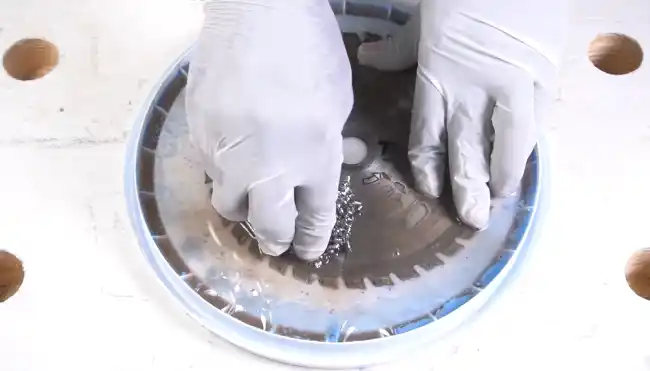
Regularly lubricate your circular saw blades after cleaning to extend their lifespan. To clean the blades, use compressed air to blow away wood chips or debris, then brush with soapy water. Once cleaned, apply oil or other lubricants on all blade surfaces.
Inspect your Blade Before Each Use
It is important to inspect your circular saw blades before each use. Look for signs of wear, such as deep grooves or chips in the blade’s edge. If you notice any wear patterns, it may be time to replace the blade.
Tips to Help Increase the Life of Your Saw Blade
- Quality and type of saw blade are essential to consider.
- Proper tension on the blade is essential.
- The Arbor size needs to match both your saw model and blade size.
- Be aware of the speed range for your specific blade model.
- Inspect your blades before every use.
- It is essential that you do not force the cut and that you let the saw motor or belt drive system take care of the job for you.
- Forcing a blemish can lead to dangerous situations, damage the saw’s motor or belt drive system, and decrease blade life.
- You should also not put too much pressure on the saw blade while in use.
- Applying too much pressure may cause a kickback which can be dangerous and put unnecessary strain on your saw blade and motor/drive system.
- Keeping your workspace free from debris is essential for extending your saw blade’s life.
- Metal shavings or other debris can get stuck in between your moving parts, which can cause damage over time if not removed properly and promptly cleaned up after each use.
Warning Signs that Signify a Dull or Damaged Blade
A. Tearing or Splintering on Wood or Metal Pieces Cut With the Blade
Using a dull or damaged saw blade can cause tearing in wood and metal pieces when cut due to the blade not being able to produce a clean cut. To avoid this, it’s important to make sure your saw blade is always sharp and in good repair. If you notice any signs of tearing on your projects, it’s time for a new saw blade.
Additionally, use a slower speed and increased pressure when cutting to ensure clean cuts without damaging your material.
B. Burn Marks Left on Materials After Cutting them with the Blade
When materials leave burn marks when you cut them with the saw, it is a sign of a dull or damaged blade. This occurs when too much friction is generated between the blade and the material as it passes through, causing heat buildup that results in the charring of the surface.
To prevent this from happening, make sure to use blades made specifically for cutting certain materials like wood or metal so as to reduce heat buildup and avoid burning your workpiece.
C. Altered Pitch in Sound During Operation of Motorized Saws
If you suddenly hear a higher-pitched noise while using a motorized saw, it could mean that the blade is dull or damaged. Possible causes of a damaged or dull blade include missing teeth or alignment problems within the tool. It’s best to replace the blade immediately to avoid further damage.
Are Diablo Blades Worth It?
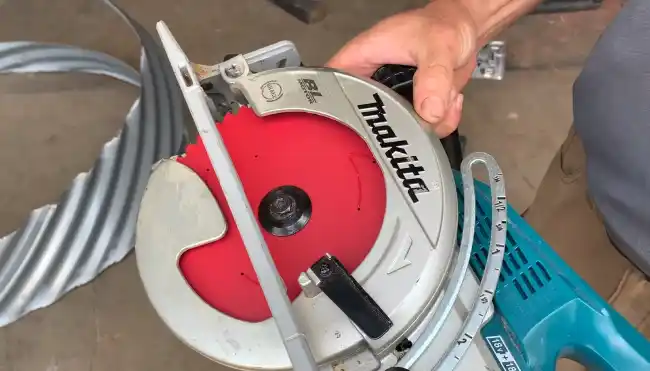
The Diablo circular saw blade is a popular choice among woodworking professionals due to its longevity, precision cutting capability, and affordability. Diablo blades are made out of high-grade steel, which helps them maintain their sharpness longer than traditional blades.
They feature advanced laser-cut stabilizer vents that help reduce noise and vibration during operation as well as reduce heat build-up, which helps prolong the life of each blade. Additionally, Diablo’s carbide teeth are designed to produce smoother cuts with minimal tear-out on both hardwoods and softwoods.
Should You Wax Your Saw Blade?
Waxing your saw blade is not necessary, but it can help improve its performance and extend its lifespan. Applying a thin coat of lubricant or wax will help protect the metal from corrosion and provide an extra layer of protection against abrasion.
Waxing will also allow for smoother operation by preventing dust build-up on the cutting edge, which could cause friction that shortens your blade’s lifespan. Additionally, waxing can also reduce noise levels when using your circular saw motor by preventing any contact between metal parts.
Are More Teeth On A Saw Blade Better For Metal?
The number of teeth on your saw blade affects how quickly it cuts through different types of materials the more teeth there are, the slower but finer the cut will be, so having more teeth is typically beneficial when working with metal in order to achieve a smooth finish without damaging or deforming the edges.
However, too many teeth can produce excessive heat during operation, so you should select a blade with fewer teeth if you need to work faster or your material is sensitive to heat damage.
Does Hot Water Dull Blades?
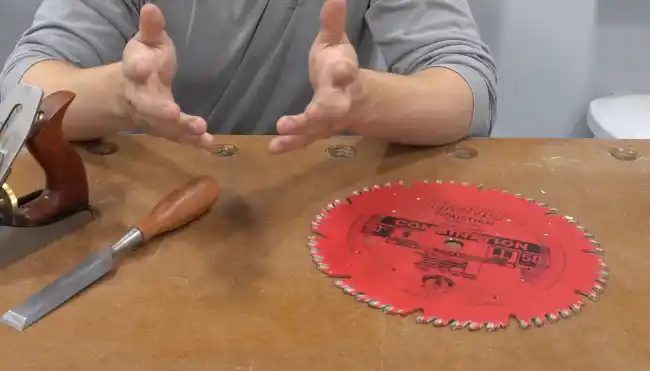
Hot water can indeed dull blades as it can damage the metal by causing it to lose its temper or hardening properties. Additionally, hot water can cause oxidation which further contributes to a blade’s dullness over time.
As such, it is important to use only cool or lukewarm water when cleaning blades, and always be sure to dry them completely afterward.
Final Thoughts
Get the most from your circular saw blade by inspecting and maintaining it regularly. Depending on usage and materials cut, with proper upkeep, a blade can last up to two years. With proper care, you can expect two years of high performance when cutting a variety of materials.
To use your saw optimally, it’s key to be familiar with its operation and the materials you’ll need for cutting. Any performance issues may indicate a worn or damaged blade. Replace it if needed.
Ensure top performance and safety in utilizing saw blades by following the manufacturer’s maintenance instructions.

